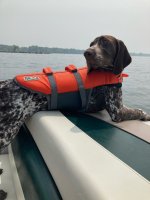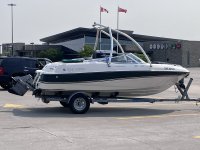Lou C
Supreme Mariner
- Joined
- Nov 10, 2002
- Messages
- 13,819
The whole problem with running AF in is this: because of the way raw water cooling works if you don’t drain the block first you can’t count on the thermostat staying open long enough to get all the water out. So it really only makes sense to fully manually drain & back fill with AF if you want to use AF. And if you’re in the northern climes I would not use -50 or -60, they start to get hard at about 10-15*F. Use -100 for trouble free self winterization. I will mix up my own GP mix with Sierra antifreeze when I can find it. Cheaper than the -100.





















